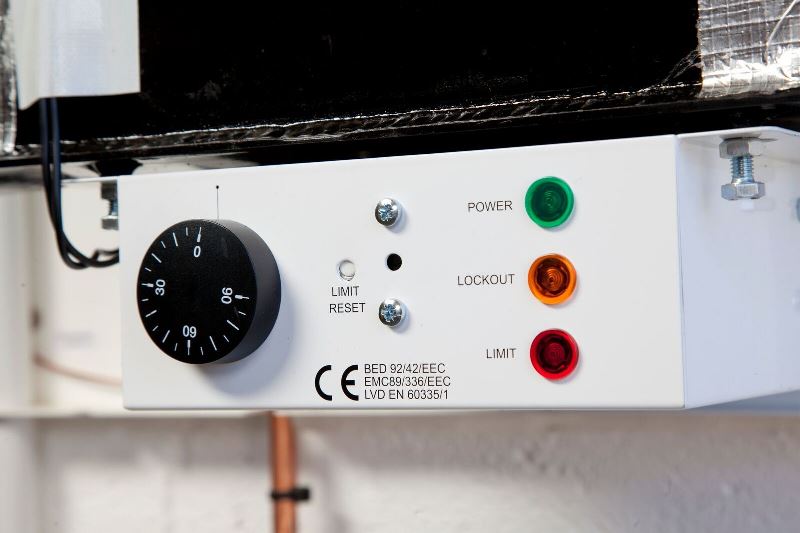
Andrew Hounsfield, MD Hounsfield Boilers, considers recent moves to encourage users to turn down the boiler flow temperature to 60°, to save money whilst staying warm.
For many homeowners boiler controls can be scary or an unknown science, and the only time they get the human touch is during the annual service by the heating engineer. However, there are real financial benefits to be had by using controls wisely, and not just from reducing gas, oil or LPG consumption.
Hounsfield Boilers have a control thermostat that can be set between 50 – 70°. For me there have been many good reasons to do this. First off, there is no good reason to have the temperature higher than 70°. Setting the thermostat to 60 degrees reduces the flow rate temperature has no reduction to room temperature, it just may take a little longer to get the rooms up to full heat, but once they are there, the warmth is the same.
Additional protection
For many years now I have made a point of my boilers having their high limit thermostats limited to 90°, rather than the industry norm of 110°. A real benefit of this is that it helps to prolong the life of the boiler. Without the stress of reaching unnecessarily high temperatures, the boiler and its components are given some additional protection which helps reduce maintenance and increase longevity. If homeowners can get some extra, trouble-free years out of their boiler, that’s a massive saving for them.
I have also always been concerned that a 1100 degree ‘trip point’ limit thermostats are permitted / accepted in boiler design, if only for safety reasons. I’ve spent well over 30 years in the heating industry, and I’ve spoken with many plumbers and heard enough horror stories of incidents happening in the home involving scolding water pouring through ceilings. It’s rare, but it does happen. Whilst major injuries have been avoided, insurance claims for plumbers and homeowners have been an issue, so reducing this risk is certainly an incentive to set the temp lower.
Appropriate levels
Once the hot water has left the boiler, the control is down to homeowner’s choice within each room. If you are out on a service call, your customers will thank you for checking the settings on radiator temperature are correct for the right room. There’s no need to have a spare room to be as warm as the living room.
Make sure that the temperature controls on radiators are modern, working and set to the required warmth. Remember to keep the thermostat in a room which has the radiators set for everyday use and not in a cooler spare room. Check that the programmer is programmed to match their lifestyle.
Visible readings
Another element I have designed into my boilers is to make the controls and the status of the boiler easily visible. A cut out in the boiler casing allows neon indicators quickly alerting the homeowner to the status of mains power, burner lockout and high temperature lockout.
Easy to see and read, there’s no need to go scrambling for the instruction manual to translate a fault code. They can save the homeowner the cost of a call-out just to press a reset button and save the engineer the time on a simple issue when there are bigger fish to fry.
Call for HVO
As an oil boiler manufacturer there’s one bit of advice I’d like to give government. If the government is serious about saving people money on their energy bills and giving them control, then please hurry up and make HVO affordable.
George Eustice MP recently had a Ten Minute Rule bill on the fair taxing of HVO passed in Parliament. However, it needs government support to make it a priority as a Private Member’s Bill.
Government support will allow oil heated homes to be carbon neutral and be taxed fairly. The public will only have control over their heat once they have a fair choice. HVO will enable homes to afford to stay warm, and afford to have a carbon neutral energy source.












